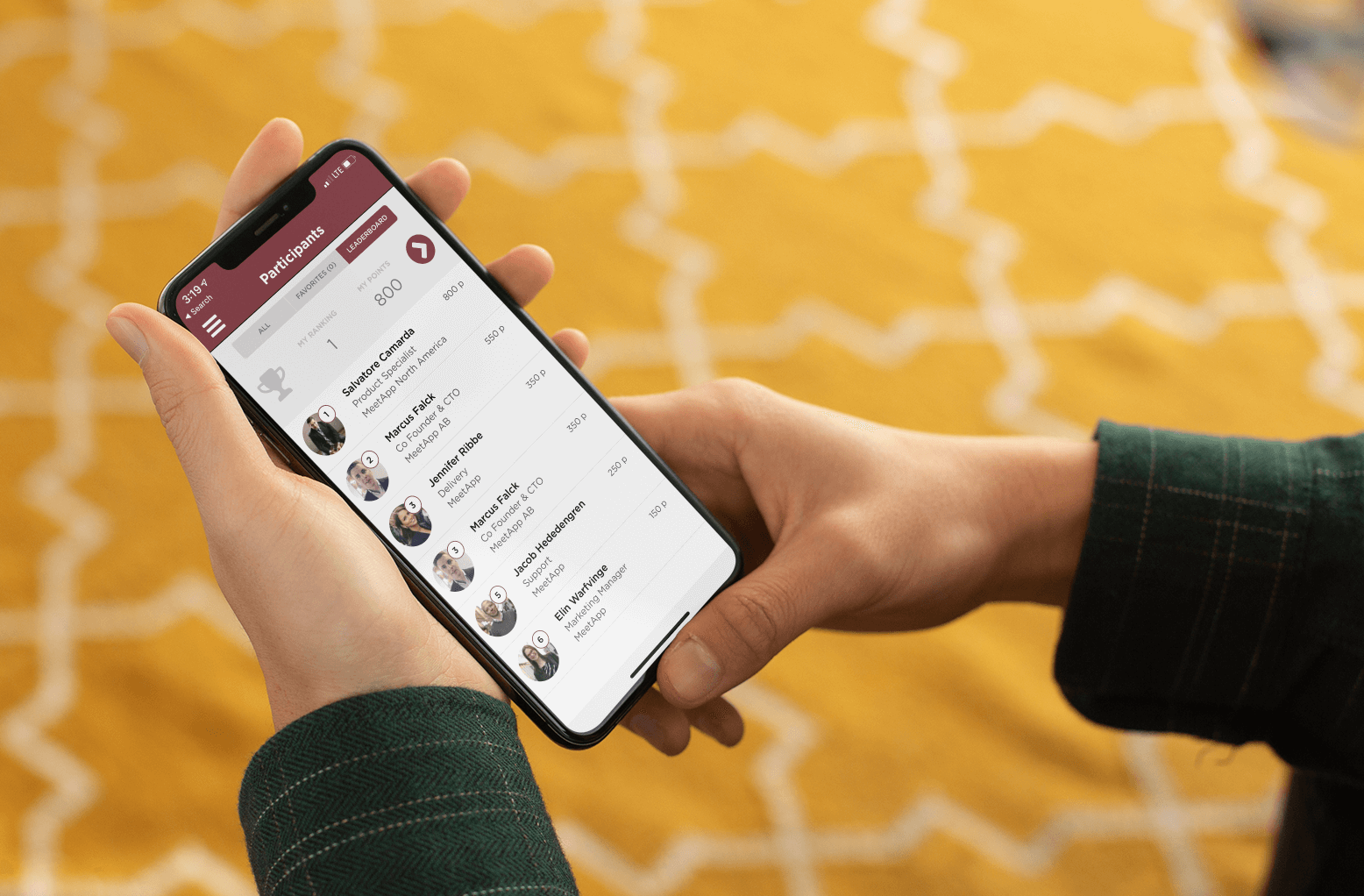Gamification has always been a key component in any event, meeting, or conference. Some traditional forms of gamification are icebreakers, polls, and other fun activities that aim to set the tone and make people feel comfortable. Gamification helps attendees break out of their shells, while also serving as a reward system to keep attendees engaged and excited. Spicing your event up with different kinds of games and activities enlivens the crowd, makes them eager to win that prize, and keeps them constantly on their toes. With an event app, gamification can be amplified and even more enticing to attendees like it never has been before.
The research
According to a 2018 research study conducted by MeetApp, 94% of event professionals responded to their survey with positive feedback on the adoption of their mobile app. For an event planner, an event’s success is contingent on attendee satisfaction, which is the main value that mobile apps deliver. With an event app, gamification becomes more immersive and fun for attendees through the infinite possibilities that event apps have to offer.
In January of 2019, MeetApp released an early version of gamification to a select group of users. Research showed that in-app gamification increased audience interaction, response and networking by an average of 85%, and increased overall positive feedback.
Examples of gamification via an event app include:
- Points for answering questions
- Points for submitting questions & solutions
- Points for feedback, evaluations & surveys
- Points for networking & interacting with the group
- Points for sharing information
- Points for attending sessions
- Points for participating in contests
How to increase audience engagement
All of these things are easily achievable through the use of push notifications to prompt people to partake in your activity. Posting pictures of the potential prize on the activity feed or creating another type of incentive for people to participate will increase engagement—with an event app, you can peak your audience’s interest with a simple click. With reinforcement of the game through push notifications and chatter on the activity feed, your audience will soon be completely engrossed with the game and your event.
Gamification is essentially a reflection of B.F. Skinner’s theory of operant conditioning; behavior is caused by the consequences. In other words, if you want your audience to behave a certain way (i.e. engage in the sessions and activities more), the consequences of their behavior (i.e. winning the game) will drive it. Positive reinforcement is the method at play in gamification because it rewards attendees for participating. The attendees’ increased engagement will, in turn, give them a more fulfilling experience at your event, the product of any successful event-engagement strategy.
References: Positive reinforcement psychology

